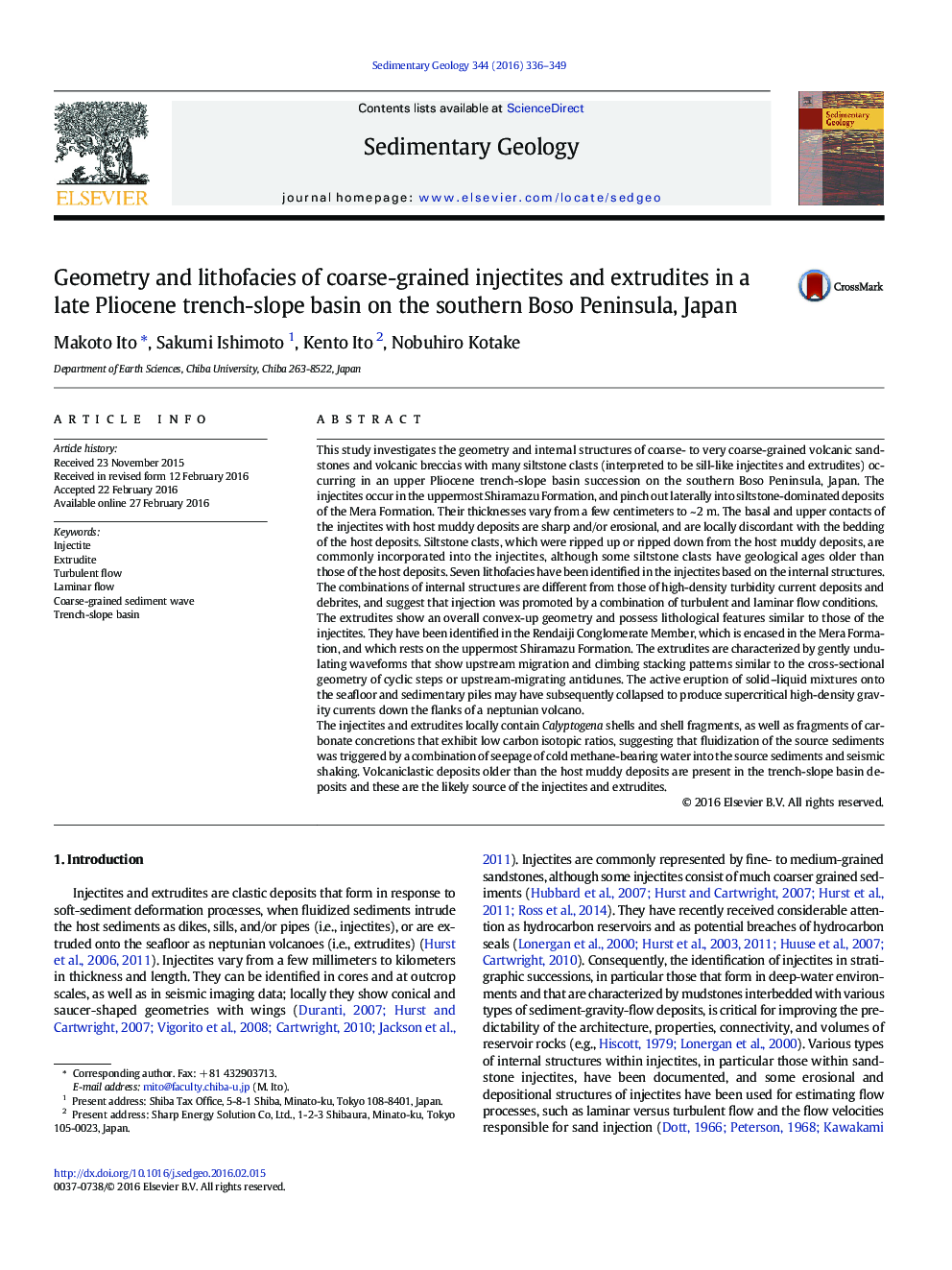| کد مقاله | کد نشریه | سال انتشار | مقاله انگلیسی | نسخه تمام متن |
|---|---|---|---|---|
| 4688967 | 1636019 | 2016 | 14 صفحه PDF | دانلود رایگان |
• Geometries and internal structures of coarse-grained injectites and extrudites were clarified.
• Injection is considered to have been promoted by a combination of turbulent and laminar flow conditions.
• Gently undulating waveforms that indicate upslope migration were identified in coarse-grained extrudites.
• Coarse-grained sediment waves are thought to have formed as cyclic steps or upslope-migrating antidunes.
This study investigates the geometry and internal structures of coarse- to very coarse-grained volcanic sandstones and volcanic breccias with many siltstone clasts (interpreted to be sill-like injectites and extrudites) occurring in an upper Pliocene trench-slope basin succession on the southern Boso Peninsula, Japan. The injectites occur in the uppermost Shiramazu Formation, and pinch out laterally into siltstone-dominated deposits of the Mera Formation. Their thicknesses vary from a few centimeters to ~ 2 m. The basal and upper contacts of the injectites with host muddy deposits are sharp and/or erosional, and are locally discordant with the bedding of the host deposits. Siltstone clasts, which were ripped up or ripped down from the host muddy deposits, are commonly incorporated into the injectites, although some siltstone clasts have geological ages older than those of the host deposits. Seven lithofacies have been identified in the injectites based on the internal structures. The combinations of internal structures are different from those of high-density turbidity current deposits and debrites, and suggest that injection was promoted by a combination of turbulent and laminar flow conditions.The extrudites show an overall convex-up geometry and possess lithological features similar to those of the injectites. They have been identified in the Rendaiji Conglomerate Member, which is encased in the Mera Formation, and which rests on the uppermost Shiramazu Formation. The extrudites are characterized by gently undulating waveforms that show upstream migration and climbing stacking patterns similar to the cross-sectional geometry of cyclic steps or upstream-migrating antidunes. The active eruption of solid–liquid mixtures onto the seafloor and sedimentary piles may have subsequently collapsed to produce supercritical high-density gravity currents down the flanks of a neptunian volcano.The injectites and extrudites locally contain Calyptogena shells and shell fragments, as well as fragments of carbonate concretions that exhibit low carbon isotopic ratios, suggesting that fluidization of the source sediments was triggered by a combination of seepage of cold methane-bearing water into the source sediments and seismic shaking. Volcaniclastic deposits older than the host muddy deposits are present in the trench-slope basin deposits and these are the likely source of the injectites and extrudites.
Journal: Sedimentary Geology - Volume 344, October 2016, Pages 336–349
